![]()
"Just as Visnu ... Devi, too, promises to return if needed.”
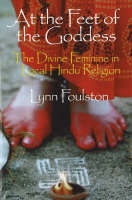
"Devi originated at a time of cosmic crisis and, consequently, her role seems very similar to that of Visnu in his many avataras (incarnations). Just as Visnu promised to manifest himself in order to protect the cosmic balance, Devi, too, promises to return if needed...
I am Nirguna. And when I am united with my sakti, maya, I become saguna, the Great Cause of this world. This maya is divided into two, Vidya and Avidya. Avidya maya hides me; whereas Vidya maya does not. Avidya creates whereas Vidya maya liberates. Devi-Bhagavatam 7. 32. 7-8"
"Therefore a person should ever strive for the destruction of ignorance, for one's birth is fruitful when ignorance is destroyed. One thereby attains the end of human existence and the state of being liberated while living.”— The Divine Mother (Devi Gita 4.7-8)
The Metaphysical Goddess
The Devi-Mahatmya
"It is here, in the Devi-Mahatmya, that the concept of an all-inclusive Goddess is fully elucidated. within a mythical framework of the Goddess's martial deeds, is the assertion that she is the Ultimate Reality, an idea transmitted by inference rather than in direct terms. Mythically, in order to conquer the asuras (demons) that threatened the very existence of the devas (gods), a supremely powerful goddess was created from the combined anger of the gods.
Then from Visnu's face, which was filled with rage, came forth a great fiery splendor (tejas), (and also from the faces) of Brahma and Siva. And from the bodies of the other gods, Indra and the others, came forth a fiery splendor, and it became unified in one place. An exceedingly fiery mass like a flaming mountain did the gods see there, filling the firmament with flames. That peerless splendour, born from the bodies of all the gods, unified and pervading the triple world with its lustre, became a woman. Devi Mahatmya 2. 9-12
The vital power that emanated from the gods took shape in the feminine form, and from there on was accepted as the Mahadevi, a supreme Goddess in her own right. She is entirely separate from the gods, the embodiment of sakti, and able to produce further powers of her own. When her work is done, she disappears; she does not return to her source, the gods. The text reinforces the conceptual notion of a Great Goddess, Mahadevi, the embodiment of power...
One of the most interesting facets of Devi's character in the Devi-Matahmya is her independence and her challenge to the stereotypes of goddesses previously presented. The Goddess here does not depend on a male consort, and successful manages male roles herself. In battle, for instance, she does not fight with male allies; if she needs assistance, she tends to create female helpers, like Kali, from herself. Her role as sakti also differs from that of the puranic goddesses as she does not empower the male deities. 'Unlike the normal female, Durga does not lend her powers or sakti to a male consort but rather takes power from the male gods in order to perform her own heroic exploits. They give up their inner strength, fire, and heat to create her and in so doing surrender their potency to her.'
The Devi-Mahatmya makes clear that the conceptual goddess cannot be easily categorized. The 'Goddess' so carefully outlined in the text leaves the reader in no doubt of the fluidity of her character. She is the personification of all aspects of energy, being simultaneously creative, preservative and destructive.
By you is everything supported, by you is the world created; by you is it protected, O Goddess, and you always consume (it) at the end (of time). At (its) emanation you have the form of creation, in (its) protection (you have) the form of steadiness; likewise at the end of this world (you have) the form of destruction. O you who consist of this world! You are the great knowledge (mahavidya), the great illusion (mahamaya), the great insight (mahamedha), the great memory, and the great delusion, the great Goddess (mahadevi), the great demoness (mahasuri). Devi-Mahatmya 1. 56-8
This verse makes it clear that the all-encompassing Goddess in this text represents all aspects of power and energy, both positive and negative, as she is described as devi (goddess) and asuri (demoness). The Devi of the Devi-Mahatmya is fully equated with Ultimate Reality, presented as the power behind the functions of the trimurti, the triad of deities — Visnu, Siva and Brahma — who are responsible of the preservation, dissolution and creation of the universe respectively:
You are the primordial material (praktri) of everything, manifesting the triad of constituent strands, the night of destruction (periodic dissolution), the great night (final dissolution), and the terrible night of delusion. Devi-Mahatmya 1. 59
Devi originated at a time of cosmic crisis and, consequently, her role seems very similar to that of Visnu in his many avataras (incarnations). Just as Visnu promised to manifest himself in order to protect the cosmic balance, Devi, too, promises to return if needed.
The Devi-Bhagavatam Purana
The Devi-Mahatmya is not the only text to offer an all-inclusive concept of female divinity, equated with the principle of Ultimate Reality. The later Devi-Bhagavatam presents a Sakta response to a variety of puranic strands of thought. According to Cheever Mackenzie Brown, its original parts were written in response to the Bhagavata Purana. The Devi Gita, which comprises skanda (book) 7, chapters 30-40 of the Devi-Bhagavatam, is based on the style of the Bhagavad Gita, but is presented from a Sakta perspective. The ninth skanda, according to Brown, is almost a verbatim copy of the 'Praktri Khanda' of the Brahmaraivarta Purana, which Brown describes as 'a kind of encyclopedia of goddesses', associating them with praktri. The Devi-Bhagavatam also encompasses a version of the Devi-Mahatmya and retells a number of puranic myths. The text is more consistently metaphysically oriented than the earlier Devi-Mahatmya, frequently eulogizing the conceptual goddess who is the power behind all other deities.
That Goddess is Eternal and Ever Constant Primordial Force... She is the source of Brahma, Visnu and the others and all of these living beings. Without Her force, no body would be able even to move their limbs.
That Supreme Auspicious Goddess is the preserving energy of Visnu,
is the Creative power of Brahma, and is the destroying force of Siva. Devi-Mahatmya 3. 30. 28-30
It is also significant that in the Devi-Bhagavatam, the Great Goddess is explicitly shown to be independent of any male authority and control. Indeed in the previous verses it is the gods that are completely subject to her will, being totally reliant on her power. The goddess/ses of Devi-Bhagavatam are repeatedly portrayed as eternal, the basis of everything, identical with Brahman.
When everything melts away i.e. there comes the Pralaya or general dissolution, then, I am not female, I am not male, nor am I hermaphrodite. I then remain as Brahma with maya. Devi-Bhagavatam 3. 6. 2
The Adya or Primordial sakti is explicitly shown to be the source of all goddesses, from the highest to the lowest forms.
Maha Laksmi is Her sattvaki sakti, Sarasvaati is Her Rajasik sakti and Maha Kali is Her tamasik sakti, these are all feminine forms. Devi-Bhagavatam 1. 1. 20
The highest forms represent the major facets of her power or energy, the three gunas, encompassing both positive and negative energies. In the Devi-Bhagavatam, the essential character of the Mahadevi encompasses both praktri (material nature), in its unmanifest and manifest forms, and purusa (pure consciousness) — the dual realities of Sankhya philosophy. Unlike Sankhya and other schools of thought, particularly Advaita, the Devi-Bhagavatam portrays praktri in a more positive light; as an integral feature of the Goddess's power. Similarly, the concept of maya (illusion) is also presented positively rather than negatively, as an integral energy inherent in the act of creation.
I am Nirguna. And when I am united with my sakti, maya, I become saguna, the Great Cause of this world. This maya is divided into two, Vidya and Avidya. Avidya maya hides me; whereas Vidya maya does not. Avidya creates whereas Vidya maya liberates. Devi-Bhagavatam 7. 32. 7-8
Brown points out an interesting and important difference between the conception of maya in the Bhagavata Purana, in which Visnu is the supreme deity, and that in the Devi-Bhagavatam. Whereas in the Bhagavata Purana, Visnu is the 'controller and possessor of maya', the Goddess of the Devi-Bhagavatam, as well as wielding the power of maya, actually is maya. There appears to be a much more intimate relationship in the Devi-Bhagavatam between the Goddess and the workings of the cosmos, for as Visnu and Siva resort to their respective saktis for assistance, Devi resorts to no one but herself.”
At the Feet of the Goddess: Divine Feminine in Local Hindu Religion
Lynn Foulston, Sussex Academic Press 1999, pp. 11-15
"She is ever attentive to the world, particularly to her devotees"
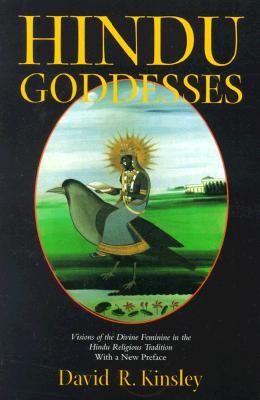
“The central role the Devi plays in mythology is that of creator and queen of
the cosmos. When she is portrayed in her own form (sva bhava), she is usually
described as a beautiful young woman in regal attire surrounded by thousands of
attendants and seated on a throne in the highest heaven. As cosmic queen she
oversees or performs directly the three primary cosmic functions of creation,
preservation, and destruction. The world is said to be destroyed when she blinks
her eyes and to be recreated when she opens her eyes.
Many Hindu mythological texts attribute the three cosmic functions to Brahma
(creation), Vishnu (preservation), and Siva (destruction). While texts extolling
the Devi often picture these three deities in their familiar roles, it is made
clear that the male gods only act according to the Devi's will and at her
command. Some myths make the point that the great male gods are entirely
dependents on the Devi for her strength and power and that if she withdraws her
power they are impotent and helpless. The Devi-bhagavata-purana also makes
it clear that the traditional heavenly bodies of these deities are far below and
inferior to the Devi's heaven. Indeed, the text asserts that there are
innumerable Brahmas, Visnus, and Sivas, whose tasks are to govern the
innumerable universes that ceaselessly bubble forth from the inexhaustibly
creative Devi (3.4.14-67). In the Lalita-sahasranama the Devi is called she from
whose ten fingernails spring the ten forms of Visnu
(Karanguli-nakhotpanna-narayana-dasakrtih, 80). In the Saundaryalahari the
entire universe is formed from a tiny speck of dust from the Devi's foot. Brahma
takes that speck and from it fashions worlds that Visnu, in his form as the
many-headed cosmic serpent, can barely support with his thousand heads (verse
2). In a particularly humbling scene for the male deities, the Devi is described
in her heaven as seated upon a couch, its four legs consisting of the great male
deities of the Hindu pantheon. The point is clear: the great male gods still
have important roles to play, but ultimately they are servants of the Devi and
do their bidding. She has created them, indeed, she has created innumerable
copies of each of them, and they act as her cosmic agents, overseeing the
universe she has created.
Although the male deities are frequently portrayed as carrying out their
traditional cosmological functions at the Devi's command, she herself is also
pictured as taking an active role in the cosmic processes. She is ever attentive
to the world, particularly to her devotees, and in various forms she acts to
uphold cosmic order and protect her creatures. Although her concern is that of a
mother for her children, hence a passionate and ever-watchful concern, her
favorite role as protector and preserver of the cosmos is that of the warrior, a
traditional male role. Many of her epithets emphasize this aspect of her
character. The Lalita-sahasranama calls her she who slays demons (Raksasaghni,
318), she who grant boons to great warriors (Mahavirendravarada, 493), ruler of
armies (Caturangabalesvari, 691), she who is worshipped by warriors (Viraradhya,
777), and mother of warriors (Viramata, 836).
The Devi's most famous mythological exploits usually involve the defeat of
demons who have taken over the world and displaced the gods from their positions
as rulers of the cosmos. The three episodes featuring the goddess Durga are
particularly popular in texts celebrating the Mahadevi, and she is identified
with Durga in various renditions of the tales. To a great extent Durga is the
Devi's most common or favorite form, and Durga's exploits are the most commonly
celebrated events in Devi mythology. From the point of view of Mahadevi's
theology the two are essentially the same deity. The account of Durga's defeat
of Mahisa in the Devi-bhagavata-purana, for example, explicitly states that the
Devi, though nirguna in her ultimate essence, assumes for her pleasure a great
variety of forms in order to maintain cosmic order and that her form of Durga is
simply one of those forms, though undoubtedly a very important one. As
Durga, the Mahadevi is typically described as a ferocious, invincible warrior
who descends into the world from time to time to combat evil of various kinds,
especially demons who have stolen the positions of the gods.
As Durga, the Mahadevi is in many ways like the great god Visnu. Visnu is
usually pictured as a cosmic king who oversees that stability of the world. When
the world is threatened by demons, he descends in different forms to combat the
danger. The Mahadevi is also said to assume forms appropriate to cosmic threats.
Visnu is traditionally said to have ten avataras. In each universal cycle he
takes ten different forms to combat ten different demons. The Mahadevi, too, is
said to have ten forms, the Dasamahavidyas (the ten great scenes or insights).
These ten forms include several well-known Hindu goddesses, and like the
Vaisnavite idea of avataras the ten forms of the Devi effectively bring together
distinct strands under a unifying great deity. From the point of view of
Devi theology and cosmology the Hindu goddesses are varying manifestations of
the Devi's activity on behalf of the world. Durga, Laksmi, Parvati, and other
goddesses are all understood to be parts of a transcendent divine economy that
is governed by the Devi in her own form (svabhava) or in her aspect as brahman.
This economy, with a few important exceptions, is oriented toward upholding and
protecting the world.
The Devi, like Visnu, also plays the role of protector and preserver in less
grand, cosmic ways by making periodic and dramatic appearances on behalf of her
individual devotees. In this role she plays the savior. Her devotees Samadhi and
Suratha propitiate her in the closing scene of the Devi-mahatmya. She appears
before them and graciously grants their desires (13.7-16). In the
Devi-bhagvata-purana when her devotee Sudarsana is surrounded by his enemies and
prays to her for help, she appears as a great warrior riding on her lion and
quickly routs them (3.23.18-41). She appears to aid Rama when he prays to her
for help in defeating Ravana. She empowers him to build a bridge from India to
Lanka and announces that she will cause him to defeat Ravana (3.30.43-61). In
the Devi-bhagvata-purana's account of the well-known story of Hariscandra, who
is reduced to poverty and the pitiable status of an outcaste, the Devi answers
Hariscandra's prayer by appearing and restoring him to his former state and
reviving his child from the dead (7.27.1-7). The Mahadevi, then, though
typically pictured as a distant, awesome figure who sits in majesty on a
heavenly throne surrounded by divine attendants, is responsive to the pleas of
her individual devotees and is quick to come to their aid in times of distress.
She is understood to be an approachable, motherly figure who is never deaf to
the cries of her children.”
Hindu Goddesses: Visions of the Divine Feminine
David R. Kinsley, U. of California Press (July 19, 1988), pp. 137-9
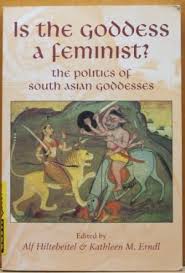
"Worship of the divine feminine has always been a distinctive feature of the Hindu tradition. Village goddesses, worshiped for millennia, still have currency today. Female divinities, such as Sarasvati, Vac, Aditi and Viraj, populate the earliest vedic literature. Later, different facets of the feminine principle are mentioned in philosophical literature; those include prakriti/pradhana (the natural world and the material substance of the universe); shakti (the creative power of a supreme being); and maya (the divine power of morphogenesis, differentiation, and veiling of the underlying unity). Texts of the puranas (scriptures that form the basis of much of Hindu theogony, mythology and ritual) such as the Devi Mahatmya and the Devi Bhagavata create a single Great Goddess (Devi) by melding together various regional goddess theologies, the different aspects of the feminine principle, and the notion of an ultimate reality. The Devi, who is transcendent and immanent, is the material cause of creation as well as the Self in all beings. In this capacity, the Devi is fully involved in the current of the cosmic drama; though formless, she manifests herself to vanquish evil each time it threatens the universal order. But she is also the quiescent ground of the Absolute. The full unfolding of the feminine principle occurs in the texts of the tantric tradition (tantras, agamas, nigamas, pancharatra samithas) with the complex systemization of the functions of Shakti.”
Is the Goddess a Feminist?
Alf Hiltebeitel, Kathleen M. Erndl, NYU Press (Nov 1, 2000), p. 24
.jpg)
The Paraclete Shri Mataji Interviewer: "Shri Mataji, you are called 'Mother.' And, it seems in the Hindu tradition there's a special context or meaning of the word 'Mother'. What is this meaning?”
“You see, in the Indian philosophy, even in the Christian philosophy it is so, but it has been little bit changed. If you read the books of Essene, you will find they have described the "Mother.” You see, the Holy Ghost is The Mother. When they say about the Holy Ghost, She is The Mother. But how can you have... You must reason it out. How can you have a father and a son without a mother?
it's a, you see, simple thing like that. You see, so it's The Mother only. Holy Ghost is very important. So, Holy Ghost is The Mother, you see. it's absurd thing, I mean, to have such a thing. Even homosexuals cannot have children. it's funny thing, isn't it. Absolutely absurd! But Christians accepted this. I don't know why. Why didn't they go into find out what is this Holy Ghost business is? They said, "it's a mystery.” How can you say it's a mystery? When you cannot explain then better not say anything about it. So, Holy Ghost is something hanging in the air. No one knows; it's a mystery, and the rest of it is the father and the son. it's absurd!
Now, the principle of Mother is in every, every scripture — has to be there. Now, The Mother's character is that She is the One Who is the Womb, She is the One Who is the Mother Earth and She is the One Who nourishes you. She nourishes us, you know that. And, this feminine thing in every human being resides as this Kundalini, as you have seen. And, when She rises, She gives you this new awareness which becomes compassion, which is flowing, which becomes soothing, nourishing energy of love.”
The Paraclete Shri Mataji
Radio Interview Santa Cruz USA--1983 Oct 01
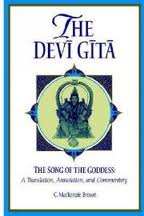
The Devi Gita is the Goddess' verbatim answers to questions on moksa i.e., the knowledge that liberates.
"Less well known than the Bhagavad Gita (The Song of the Lord), both in India and the West, the Devi Gita nonetheless serves, for certain Hindus who see ultimate reality primarily in terms of a divine and beneficent mother, as the supreme scripture, complementing and completing all others. Indeed, the Goddess herself in the Devi Gita frequently quotes from the Bhagavad Gita, as well as from other Hindu scriptures, but with the understanding that all such passages ultimately point to her as the Absolute.
The gitas of the Goddess and of the Lord are songs in a rather special sense: as philosophical and devotional poems in the form of dialogues between a divine teacher and her or his disciple(s). In the Bhagavad Gita, it is the Lord Krsna who responds to the queries of the dejected and reluctant warrior Arjuna as he is about to enter an internecine struggle with a rival family clan. This struggle between the Pandava's (Arjuna's clan) and the Kauravas is the subject of the great Hindu epic, the Mahabharata, of which the Bhagavad Gita is a small part. The Bhagavad Gita, placed in the tension-filled moments just prior to the beginning of battle, focuses on the various moral and spiritual dilemmas faced by Arjuna. Krsna, serving as Arjuna's charioteer, surveys with his despondent student the two armies drawn up for battle and reveals the necessity of the war and of Arjuna's participation in it. In the process Krsna explains the nature of existence, human nature, and the solution to human suffering, summarizing in due course the major religious ideals of Hindu culture.
In the Devi Gita, it is the World-Mother Bhuvanesvari who expounds similar metaphysical truths to her devotee, the Mountain-King Himalaya, in the midst of an assembly of gods. While the occasion for the Devi's revelations is ostensibly prompted by a crisis in the fortunes of the gods, their celestial home being overrun by the demon Taraka and his army , the dramatic, epic context of the Bhagavad Gita is largely missing. The real motivation behind Himalaya's questions to the Goddess are simply his own devotion to her and his desire for liberating knowledge. His thirst for spiritual wisdom is quite disconnected from any specific impending worldly (or celestial) catastrophe.
The revelations of the Goddess in the Devi Gita, like those of Krsna in the Bhagavad Gita, take two complementary forms: the disclosure of her primary visual or iconic manifestations (darsana), recounted in chapters 1 and 3, and her teachings (upadesa), constituting the bulk of chapters 2 through 10. Her explanations of creation and other cosmological matters are the focus of chapters 2 and 3. Her exposition of the various spiritual disciplines, such as the paths of knowledge (Jnana Yoga), psychophysical training (the Eight-limbed Yoga of Patanjali and Kundalini Yoga) and devotion (Bhakti Yoga), are the concerns of chapters 4 through 10. These teachings elucidating the human predicament are themselves illuminated by the iconic displays, which serve to reveal various aspects of the divine personality of the Goddess and her relationship to the world and humankind.
The manifestation of the Goddess in her highest iconic form, as the lovely four-armed Bhuvanesvari, clearly emphasizes her benign nature. The most detailed visual description of Bhuvanesvari in the Devi Gita (1.31-41) stresses her divine beauty and charm, her compassionate face, and her gracious disposition. She is dressed in red, the color of auspiciousness and life. Prominent among her identifying marks are her three playful eyes and four hands, two of which carry a noose and a goad, the other two gesturing her beneficence and granting of fearlessness. A modern devotee affirms that these 'four hands which represents dharama, artha, kama and moksa,' that is, her eagerness and power to bestow the four chief ends of human existence (virtue, wealth, pleasure, and liberation).
A lower but rather more awesome iconic form of the Goddess revealed in the Devi Gita (3.22-38) is her manifestation as the Viraj, the brilliant Cosmic Body of the world, in which the whole universe appears as part of her majestic, lordly body. Such a cosmotheistic vision emphasizes the ultimate unity of the Goddess and the manifest world.
In addition to the iconic manifestations and their interrelated teachings, the Devi Gita includes two brief but important hymns of praise (stotras). Each is offered to the Goddess by the gods as they behold her two most magnificent forms, as Bhuvanesvari and as the Viraj, in awe-struck response to receiving these gracious visions of the Devi. These hymns draw heavily from other scriptural sources, including Arjuna's own wonder-filled praise of Krsna after viewing the latter's terrifying cosmic form in the Bhagavad Gita. The hymns of the Devi Gita, praising and describing the supreme reality, summarize and affirm the central revelations of the Goddess herself.
C. MacKenzie Brown, The Devi Gita: The Song of the Goddess
State University of New York Press (September 1998) pp. 2-4
October 23, 2017
Yahoo forum post # 18807
Note: The word verbatim is emphasized to underpin the fact that it is not a third-party or witness account. Thus one can be assured of originality.
I also want to stress the fact that the Devi's incarnation as the Paraclete Shri Mataji continues that role of liberation. However, this time the Divine Mother reveals that central role in all the scriptures--Torah, Bible, Quran, Guru Grant Sahib, Tao Te Ching, Prajnaparamita Sutra, Vedas, Puranas, Upanishads--that do not deviate from the Devi Gita i.e., in terms of liberating Knowledge.
The Devi Gita and all other scriptures, no matter at which point in history, must be view through Time ...................... and She is beyond the concept of Time (millennia, age, epoch, era, eon).
What I am trying to say is that the Divine Mother continues to liberate Her disciples again and time again, and continues over the creation and dissolutions of Universes. Thus it is vital that we understand profoundly the mode to continue Her eternal role of the Mother that liberates - the Paraclete Shri Mataji who has come as promised by Jesus to complete His message of the Resurrection and life eternal!
However, if you continue clinging to your inherited religion to the exclusion of others progress is going to be slow. The only way would be to meditate on the Mother and find refuge and comfort in Her 24/7.
jagbir
January 1, 2018
Yahoo forum post # 19015
Dear Pamela and all,
There is one aspect of the Paraclete Shri Mataji in relation to the DIVINE MOTHER that has never been discussed all these years. I have always upheld the DEVI way above Shri Mataji and have very good reasons for doing so. From 1993 onwards I began knowing that SHE exists, and within. Over the years I found myself becoming all that small and insignificant.
Today I am truly happy to know that I am like an ant trying to understand the Universe. Anything more would be bordering on arrogance, and I feel really good admitting that.
I cannot, in all honesty, say the same for the Paraclete Shri Mataji. Anything more would definitely be both ignorance and hypocrisy, and I also feel really good admitting that. (Hypocrisy because in private I would deny that Shri Mataji is anyway even close to the PRIMORDIAL MOTHER in every aspect of omnipotence, omniscience, and omnipresence.)
But what if the DEVI had revealed HER presence in the Sahasrara from 1993 onwards ................... but there was no Shri Mataji on Earth? How effective would have SHE been in truly revealing HERSELF without an incarnation to confirm that identity?
Without a doubt, it would have been a useless exercise. And if you compare Shri Mataji's disciples reaction and rejection of HER revelations post-1993 that futility would become clearly apparent. The ADI SHAKTI had to have HER incarnation on Earth before SHE could reveal HERSELF.
But what has the Paraclete Shri Mataji also revealed about the DIVINE MOTHER within for the first time in history? Shri Mataji has revealed that the DIVINE MOTHER is found in every scripture--Torah, Bible, Quran, Puranas, Upanishads, Vedas, Guru Grant Sahib, and Prajnaparamita. Shri Mataji has also revealed that the DIVINE MOTHER is central to the Resurrection--the baptism that triggers rebirth by the Holy Spirit and life eternal. Shri Mataji has also revealed that the DIVINE MOTHER was, is, and will always be within. (That Jesus declared that the Paraclete will remain within forever as the HOLY SPIRIT is one of the most comforting truth since we are all meditating on HER within us.)
It is 2018 and 99% of the world does not know these central truths of the advent and message of the Paraclete Shri Mataji. That the Paraclete Shri Mataji's advent was crucial to the realization of HER within must comfort many ................................... and help the transition to that interiority.
regards,
jagbir

Shri Mataji Nirmala Devi was
Christian by birth, Hindu by
marriage, and Paraclete by duty.
"The Paraclete represents direct,
intimate divine intervention,
supporting and teaching
believers and challenging the
world, as Jesus did.” (D. Stevick
Jesus and His Own, 2011, 290)
The Messiah-Paraclete-Ruh Sri Mataji
Birmingham, U.K.'July 9, 1982
"Though you can understand that Mother's Love makes it very easy for you to get to your Realization and that the whole story of Last Judgment - which looks such a horrifying experience - has been made very beautiful, and very tender, and delicate, and does not disturb you.”
The Messiah-Paraclete-Ruh Sri Mataji
Kundalini And Kalki Shakti, Bombay, India'September 28, 1979
The fulfillment of eschatological instruction promised by Jesus
An apocalypse (Greek: apokalypsis meaning “an uncovering”) is in religious contexts knowledge or revelation, a disclosure of something hidden, “a vision of heavenly secrets that can make sense of earthly realities.” (Ehrman 2014, 59)
“An apocalypse (Ancient Greek: apokalypsis ... literally meaning "an uncovering") is a disclosure or revelation of great knowledge. In religious and occult concepts, an apocalypse usually discloses something very important that was hidden or provides what Bart Ehrman has termed, "A vision of heavenly secrets that can make sense of earthly realities". Historically, the term has a heavy religious connotation as commonly seen in the prophetic revelations of eschatology obtained through dreams or spiritual visions.” Wikipedia 2021-01-09

Total number of recorded talks 3058: Public Programs 1178, Pujas 651, and other (private conversations) 1249
“The Paraclete will come (15:26; 16:7, 8, 13) as Jesus has come into the world (5:43; 16:28; 18:37)... The Paraclete will take the things of Christ (the things that are mine, ek tou emou) and declare them (16:14-15). Bishop Fison describes the humility of the Spirit, 'The true Holy Spirit of God does not advertise Herself: She effaces Herself and advertises Jesus.' ...
It is by the outgoing activity of the Spirit that the divine life communicates itself in and to the creation. The Spirit is God-in-relations. The Paraclete is the divine self-expression which will be and abide with you, and be in you (14:16-17). The Spirit's work is described in terms of utterance: teach you, didasko (14:26), remind you, hypomimnesko (14:26), testify, martyro (15:26), prove wrong, elencho (16:8), guide into truth, hodego (16:13), speak, laleo (16:13, twice), declare, anangello (16:13, 14, 15). The johannine terms describe verbal actions which intend a response in others who will receive (lambano), see (theoreo), or know (ginosko) the Spirit. Such speech-terms link the Spirit with the divine Word. The Spirit's initiatives imply God's personal engagement with humanity. The Spirit comes to be with others; the teaching Spirit implies a community of learners; forgetful persons need a prompter to remind them; one testifies expecting heed to be paid; one speaks and declares in order to be heard. The articulate Spirit is the correlative of the listening, Spirit-informed community.
The final Paraclete passage closes with a threefold repetition of the verb she will declare (anangello), 16:13-15. The Spirit will declare the things that are to come (v.13), and she will declare what is Christ's (vv. 14, 15). The things of Christ are a message that must be heralded...
The intention of the Spirit of truth is the restoration of an alienated, deceived humanity... The teaching role of the Paraclete tends to be remembered as a major emphasis of the Farewell Discourses, yet only 14:26 says She will teach you all things. (Teaching is, however, implied when 16:13-15 says that the Spirit will guide you into all truth, and will speak and declare.) Franz Mussner remarks that the word used in 14:26, didaskein, "means literally 'teach, instruct,' but in John it nearly always means to reveal.” (Stevick 2011, 292-7)
The Holy Spirit as feminine: Early Christian testimonies and their interpretation,
Johannes van Oort, Radboud University, Nijmegen, The Netherlands
Department of Church History and Church Polity, Faculty of Theology, University of Pretoria, South Africa
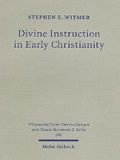
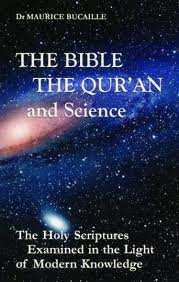
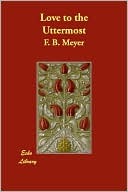
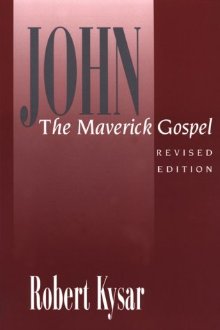
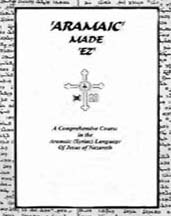
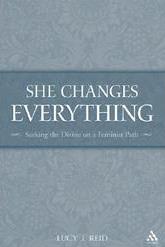
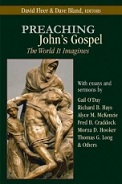

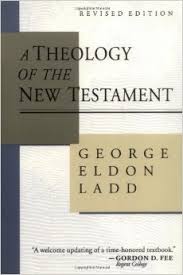
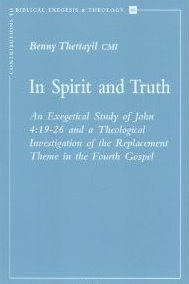


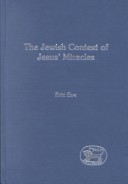
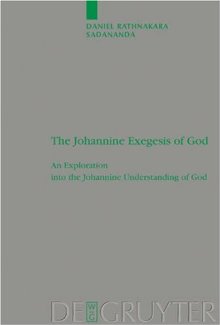

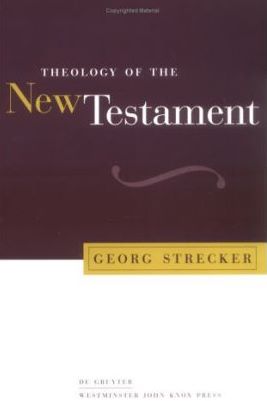

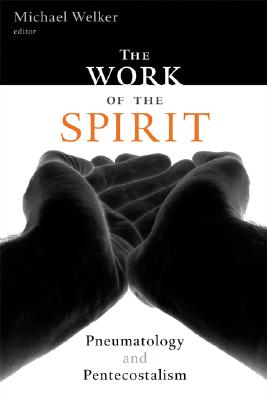
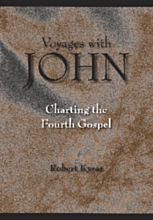


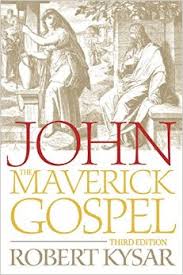
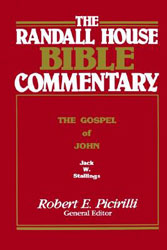

Stephen E. Witmer, Divine instruction in Early Christianity
“Jesus therefore predicts that God will later send a human being to Earth to take up the role defined by John .i.e. to be a prophet who hears God's words and repeats his message to man.”
M. Bucaille, The Bible, the Qur'n, and Science
“And when Jesus foreannounced another Comforter, He must have intended a Person as distinct and helpful as He had been.”
F. B. Meyer, Love to the Utmost
“The Paraclete has a twofold function: to communicate Christ to believers and, to put the world on trial.”
Robert Kysar, John The Meverick Gospel
“But She—the Spirit, the Paraclete...—will teach you everything.”
Danny Mahar, Aramaic Made EZ)
“Grammatical nonsense but evidence of the theological desire to defeminize the Divine.”
Lucy Reid, She Changes Everything
“The functions of the Paraclete spelled out in verses 13-15... are all acts of open and bold speaking in the highest degree.”
David Fleer, Preaching John's Gospel
“The reaction of the world to the Paraclete will be much the same as the world's reaction was to Jesus.”
Berard L. Marthaler, The Creed: The Apostolic Faith in Contemporary Theology
Bultmann calls the “coming of the Redeemer an 'eschatological event,' 'the turning-point of the ages.”
G. Ladd, A Theology of the New Testament
“The Paraclete equated with the Holy Spirit, is the only mediator of the word of the exalted Christ.”
Benny Thettayil, In Spirit and Truth
“The divine Paraclete, and no lessor agency, must show the world how wrong it was about him who was in the right.”
Daniel B. Stevick , Jesus and His Own: A Commentary on John 13-17
Stephen Smalley asserts that “The Spirit-Paraclete ... in John's Gospel is understood as personal, indeed, as a person.”
Marianne Thompson, The God of the Gospel of John
“The Messiah will come and the great age of salvation will dawn (for the pious).”
Eric Eve, The Jewish context of Jesus' Miracles
“The remembrance is to relive and re-enact the Christ event, to bring about new eschatological decision in time and space.”
Daniel Rathnakara Sadananda, The Johannine Exegesis of God
“The Spirit acts in such an international situation as the revealer of 'judgment' on the powers that rule the world.”
Michael Welker, God the Spirit
The Paraclete's “Appearance means that sin, righteousness, and judgment will be revealed.”
Georg Strecker, Theology of the New Testament
“While the Spirit-Paraclete is the true broker, the brokers they rely on are impostors.”
T. G. Brown, Spirit in the writings of John
“The pneumatological activity ... of the Paraclete ... may most helpfully be considered in terms of the salvific working of the hidden Spirit.”
Michael Welker, The work of the Spirit
“The pneuma is the peculiar power by which the word becomes the words of eternal life.”
Robert Kysar, Voyages with John
“The gift of peace, therefore, is intimately associated with the gift of the Spirit-Paraclete.”
Francis J. Moloney, The Gospel of John
“This utopian hope, even when modestly expressed, links Jesus and the prophets to a much wider history of human longing.”
Harvey Cox, The Future of Faith
“Because of the presence of the Paraclete in the life of the believer, the blessings of the end-times—the eschaton—are already present.”
Robert Kysar, John
“They are going, by the Holy Spirit's power, to be part of the greatest miracle of all, bringing men to salvation.”
R. Picirilli, The Randall House Bible Commentary
“The Kingdom of God stands as a comprehensive term for all that the messianic salvation included... is something to be sought here and now (Mt. 6:33) and to be received as children receive a gift (Mk. 10:15 = Lk. 18:16-17).”
G. Ladd, A Theology of the New Testament
Beliefs
By PETER STEINFELS JAN. 20, 2007
“The image of the God who judges in wrath has caused a great deal of spiritual damage," Professor Moltmann will be telling his listeners.
But he is not satisfied with the alternative that makes eternal destiny simply a matter of the individual's own choice of whether to reject God. In that case, Professor Moltmann says, the Last Judgment becomes no more than "the ultimate endorsement of our free will." God really has nothing much to do with it beyond implementing the human outcome; in short, "we are the lords, and God is our servant," he says.
The alternative, in Professor Moltmann's view, is to put Jesus Christ at the center of this final drama. "It is high time to Christianize our traditional images and perceptions of God's Final Judgment," he says.
Any Last Judgment with Christ at the center must answer the cries of human victims for justice, without simply meting out vengeance on the perpetrators of injustice, Professor Moltmann suggests. A Christian eschatological vision would involve not the retributive justice of human courts but "God's creative justice," which can heal and restore the victims and transform the perpetrators.
The goal of a final judgment, in this interpretation, is not reward and punishment but victory over all that is godless, which he calls "a great Day of Reconciliation." Professor Moltmann argues for the universal preservation and salvation not only of humans, as individuals and as members of groups, but also of all living creatures. It has been "a fatal mistake of Christian tradition in doctrine and spirituality," he argues, to emphasize the "end of the old age" rather than "the new world of God," the beginning of the "life of the world to come."
This resurrected life will be bodily and worldly, and its expectation, he says, should teach people to "give ourselves wholeheartedly to this life here and surrender in love" to its “beauties and pains.”
New York Times, Lessons for Living Found in Views of the Last Judgment
January 20, 2007
“But today is the day I declare that I am the one who has to save the humanity. I declare I am the one who is Adishakti, who is the Mother of all the Mothers, who is the Primordial Mother, the Shakti, the desire of God, who has incarnated on this Earth to give its meaning to itself; to this creation, to human beings and I am sure through My Love and patience and My powers I am going to achieve it.
I was the one who was born again and again. But now in my complete form and complete powers I have come on this Earth not only for salvation of human beings, not only for their emancipation, but for granting them the Kingdom of Heaven, the joy, the bliss that your Father wants to bestow upon you.”
THE MOTHER: Messiah-Paraclete-Ruh
London, UK—December 2, 1979
“I am the one about which Christ has talked... I am the Holy Spirit who has incarnated on this Earth for your realization.”
THE MOTHER: Messiah-Paraclete-Ruh
New York, USA—September 30, 1981
“But to communicate with the people, to communicate with the Spirit—to understand the Kundalini, the vibrations, and their different decodings and all that—the Holy Spirit had to come; with Her mouth, and with Her voice, and with Her intelligence that is intelligible to you; with the knowledge, and everything.
Otherwise it is not possible to communicate and that's why if somebody has to come you have to just recognize. Recognition is the best way of understanding the powers that are given to you...
So somebody has to be there to give you the complete picture. You get Realization, you get vibrations (Ruach, Pneuma, Prana), but then what? What about the complete? And for that the Holy Ghost has to take a form. All right?”
The Paraclete Shri Mataji
Sydney, Australia—April 7, 1981
Guest: “Hello Mother.”
Shri Mataji: “Yes.”
Guest: “I wanted to know, is the Cool Breeze (Pneuma) that you have spoken about, you feel on the hands the Cool Wind of the Holy Spirit, as spoken about in the Bible?”
Shri Mataji: “Yes. Yes, yes, same thing, same thing. You have done the good job now, I must say.”
Interviewer: “Is it the Holy Spirit?”
Shri Mataji: “Yes, of course, is the Holy Spirit.”
Guest: “Aha... I am feeling it now on my hand through the [not clear]”
Shri Mataji: “It’s good.”
Interviewer: “Did you want to say anything more than that?”
Guest: “No, I just... That’s all I wanted to know because I...”
Shri Mataji: “Because you are thoughtless now. Enjoy yourself.”
Guest: “Thank you.”
The Paraclete Shri Mataji
Talkback Radio 2UE, Sydney, Australia—March 31, 1981
Second Guest: “I just want to ask Mother about a quotation from the Bible.”
Interviewer: “Yes, what’s that?”
Guest: “It says, ‘But the comfort of the Holy Spirit that the Father will send in My name would teach you all things.’ I would like to ask Her about that.”
Interviewer: “Could you just repeat the quotation again?”
Guest: “But the Comforter, the Holy Spirit, whom the Father will send in My name, will teach you all things.”
Interviewer: “And that’s from where?”
Guest: “John chapter 14, verse 26.”
Shri Mataji: “I think you should take your realization and then you will know the answer to it. Because, logically if it points out to one person, then you have to reach the conclusion, isn’t it? That’s a logical way of looking at things. But I am not going to say anything or claim anything. It is better you people find out yourself.”
Interviewer: “Does that answer your question?”
Guest: “Is the, is the Comforter on the Earth at the present time? Has the Comforter incarnated? Mataji should be able to tell us this because She said that through these vibrations on Her hands, She ...”
Shri Mataji: “Yes, She is very much here and She’s talking to you now. Can you believe that?”
Guest: “Well, I feel something cool [Pneuma/Prana/Chi] on my hand. Is that some indication of the ...?”
Shri Mataji: “Yes, very much so. So that’s the proof of the thing. You’ve already started feeling it in your hands.”
Guest: “Can I?”
Shri Mataji: “Ask the question, ‘Mother, are you the Comforter?’”
Guest: “Mother, are you the Comforter?”
Shri Mataji: “Ask it thrice.”
Guest: “Mother, are you the Comforter?”
Shri Mataji: “Again.”
Guest: “Mother, are you the Comforter?”
Shri Mataji: “Now, what do you get?”
Guest: “Oh, I feel this kind of cool tingling [Pneuma/Prana/Chi] passing all through my body.”
Shri Mataji: “That’s the answer now.”
The Paraclete Shri Mataji
Talkback Radio 2UE, Sydney, Australia—March 31, 1981
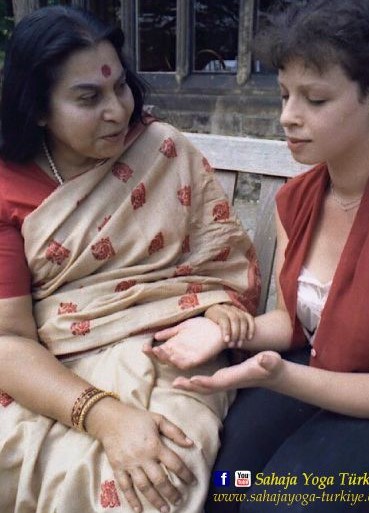
“The Paraclete and the disciples (vv. 25-26): The theme of departure (cf. vv. 1-6; vv. 18-24) returns. There are two "times" in the experience of the disciples: the now as Jesus speaks to them (v. 25) and the future time when the Paraclete, the Holy Spirit, sent by the Father in the name of Jesus, will be with them (v. 26). The Paraclete will replace Jesus' physical presence, teaching them all things and recalling for them everything he has said (v. 26). As Jesus is the Sent One of the Father (cf. 4:34; 5:23; 24, 30, 37; 6:38-40; 7:16; 8:16, 18, 26; 12:44-49), so is the Paraclete sent by the Father. The mission and purpose of the former Paraclete, Jesus (cf. 14:13-14), who speaks and teaches "his own" will continue into the mission and purpose of the "other Paraclete" (cf. v. 16) who teaches and brings back the memory of all that Jesus has said. The time of Jesus is intimately linked with the time after Jesus, and the accepted meaning of a departure has been undermined. The inability of the disciples to understand the words and deeds of Jesus will be overcome as they "remember" what he had said (cf. 2:22) and what had been written of him and done to him (cf. 12:16). The "remembering" will be the fruit of the presence of the Paraclete with the disciples in the in-between-time. In v. 16 Jesus focused on the inability of the world to know the Paraclete, but in v. 26 the gift of the Paraclete to "his own" is developed. As Jesus was with the disciples (v. 25), so will the Paraclete be with the disciples in the midst of hostility and rejection (v. 16). As the story has insisted that Jesus' teaching has revealed God to his disciples, so will the Paraclete recall and continue Jesus' revelation of God to the disciples (v. 26).” (Harrington 1998, 412)
“This is the transformation that has worked, of which Christ has talked, Mohammed Sahib has talked, everybody has talked about this particular time when people will get transformed.”
THE MOTHER: Messiah-Paraclete-Ruh
Chistmas Puja, Ganapatipule, India—25 December 1997
“The Resurrection of Christ has to now be collective Resurrection. This is what is Mahayoga. Has to be the collective Resurrection.”
THE MOTHER: Messiah-Paraclete-Ruh
Easter Puja, London, UK—11 April 1982
“Today, Sahaja Yaga has reached the state of Mahayoga, which is en-masse evolution manifested through it. It is this day’s Yuga Dharma. It is the way the Last Judgment is taking place. Announce it to all the seekers of truth, to all the nations of the world, so that nobody misses the blessings of the divine to achieve their meaning, their absolute, their Spirit.”
THE MOTHER: Messiah-Paraclete-Ruh
MAHA AVATAR, ISSUE 1, JUL-SEP 1980
“The main thing that one has to understand is that the time has come for you to get all that is promised in the scriptures, not only in the Bible but all all the scriptures of the world. The time has come today that you have to become a Christian, a Brahmin, a Pir, through your Kundalini awakening only. There is no other way. And that your Last Judgment is also now.”
THE MOTHER: Messiah-Paraclete-Ruh
“You see, the Holy Ghost is the Mother. When they say about the Holy Ghost, She is the Mother... Now, the principle of Mother is in every, every scripture — has to be there. Now, the Mother's character is that She is the one who is the Womb, She is the one who is the Mother Earth, and She is the one who nourishes you. She nourishes us. You know that. And this Feminine thing in every human being resides as this Kundalini.”
The Paraclete Shri Mataji
Radio Interview, Santa Cruz, USA—1 October 1983
“But there is a Primordial Mother which was accepted by all the religions; even the Jews had it... In India, this is called as Adi Shakti. In every religion they had this Mother who was the Primordial Mother.”
The Paraclete Shri Mataji
TV Interview, Los Angeles, USA—11 October 1993
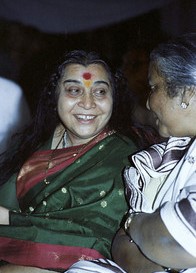
Total number of Recorded Talks 3058, Public Programs 1178, Pujas 651, and other (private conversations) 1249
“What are they awaiting but for the Hour to come upon them suddenly? Its Signs have already come. What good will their Reminder be to them when it does arrive?” (Qur'n, 47:18) “As the above verse indicates, God has revealed some of Doomsday's signs in the Qur'n. In Surat az-Zukhruf 43:61, God informs us that 'He [Jesus] is a Sign of the Hour. Have no doubt about it...' Thus we can say, based particularly on Islamic sources but also on the Old Testament and the New Testament, that we are living in the End Times.” Harun Yahya
Good News (An Naba) of Resurrection (Al-Qiyamah): Videos 3474, Audios 1945, Transcripts 3262 and Events 2413
“Concerning what are they disputing?
Concerning the Great News. [5889]
About which they cannot agree.
Verily, they shall soon (come to) know!
Verily, verily they shall soon (come to) know!”
surah 78:1-5 An Naba (The Great News)
5889. Great News: usually understood to mean the News or Message of the Resurrection.
Abdullah Yusuf Ali, The Holy Qur'n
Amana Corporation, 1989
[Moderator]: “Any other questions?”
[Audience]: “Pardon me for asking this question, but, earlier you talked about the Resurrection and you mentioned about the scriptures, where like in the Hindus scriptures they talk about the Kalki Avatar who will come for the Resurrection, and for the Christians, I know they talk about the return of Christ and all the religions talk about this Resurrection and the belief in the coming of the Messiah. So I just want to know since you say you are going to give the resurrection to us, what is your station?”
Shri Mataji: “In Russia?”
[Audience]: “And are you the promised Messiah? Shri Mataji, are you?”
Shri Mataji: “I see now I am not going to tell you anything about myself, to be very frank. Because see Christ said He was the Son of God, and they crucified Him. I don't want to get crucified. You have to find out. When you become the Spirit you will know what I am. I don't want to say anything about myself.”
THE MOTHER: Messiah-Paraclete-Ruh
Toronto, Canada—October 5, 1993
“It is the Mother who can awaken the Kundalini, and that the Kundalini is your own Mother. She is the Holy Ghost within you, the Adi Shakti, and She Herself achieves your transformation. By any talk, by any rationality, by anything, it cannot be done.”
The Paraclete Shri Mataji
“She is your pure Mother. She is the Mother who is individually with you. Forget your concepts, and forget your identifications. Please try to understand She is your Mother, waiting for ages to give you your real birth. She is the Holy Ghost within you. She has to give you your realization, and She's just waiting and waiting to do it.”
THE MOTHER: Messiah-Paraclete-Ruh
Sydney, Australia—Mar 22 1981
“The Kundalini is your own mother; your individual mother. And She has tape-recorded all your past and your aspirations. Everything! And She rises because She wants to give you your second birth. But She is your individual mother. You don't share Her with anybody else. Yours is a different, somebody else's is different because the tape-recording is different. We say She is the reflection of the Adi Shakti who is called as Holy Ghost in the Bible.”
The Paraclete Shri Mataji
Press Conference July 08 1999—London, UK
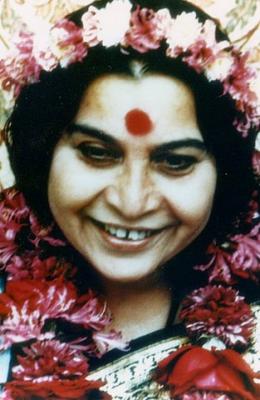
Shri Mataji Nirmala Devi was
Christian by birth, Hindu by
marriage, and Paraclete by duty.
"The Paraclete represents direct,
intimate divine intervention,
supporting and teaching
believers and challenging the
world, as Jesus did. " (D. Stevick
Jesus and His Own, 2011, 290)
But there has to be a Mother and this is the time of Aquarius what we call in Sanskrit as Kumbha, meaning the Aquarius which is the Kundalini, where She nourishes, where She cures you, She redeems you, She guides you, counsels you, and this is the time of the Mother. We had the time of the Father, then of the Son, and now this is the time of the Mother where She has to nourish you, where She has to take you to your ultimate goal that is the Spirit.
The consciousness itself, the way we have been moving in other directions, have been like people think that if a woman starts fighting for her life and then she is asserting the femininity. She is not.
What I'm saying is not meant for women or men. It is meant for every one of us, that we have to become like a mother. Like a Divine Mother, like a person who can nourish people, who can give them love, affection, attention, perseverance, fore-bearing.
This is only possible for a Mother to do it and that motherhood should be awakened in every human being.”
THE MOTHER: Messiah-Paraclete-Ruh
Public Program Day 1, Boston, United States—Oct. 11, 1983
Disclaimer: Our material may be copied, printed and distributed by referring to this site. This site also contains copyrighted material the use of which has not always been specifically authorized by the copyright owner. We are making such material available to our readers under the education and research provisions of "fair use" in an effort to advance freedom of inquiry for a better understanding of religious, spiritual and inter-faith issues. The material on this site is distributed without profit. If you wish to use copyrighted material for purposes other than “fair use” you must request permission from the copyright owner.